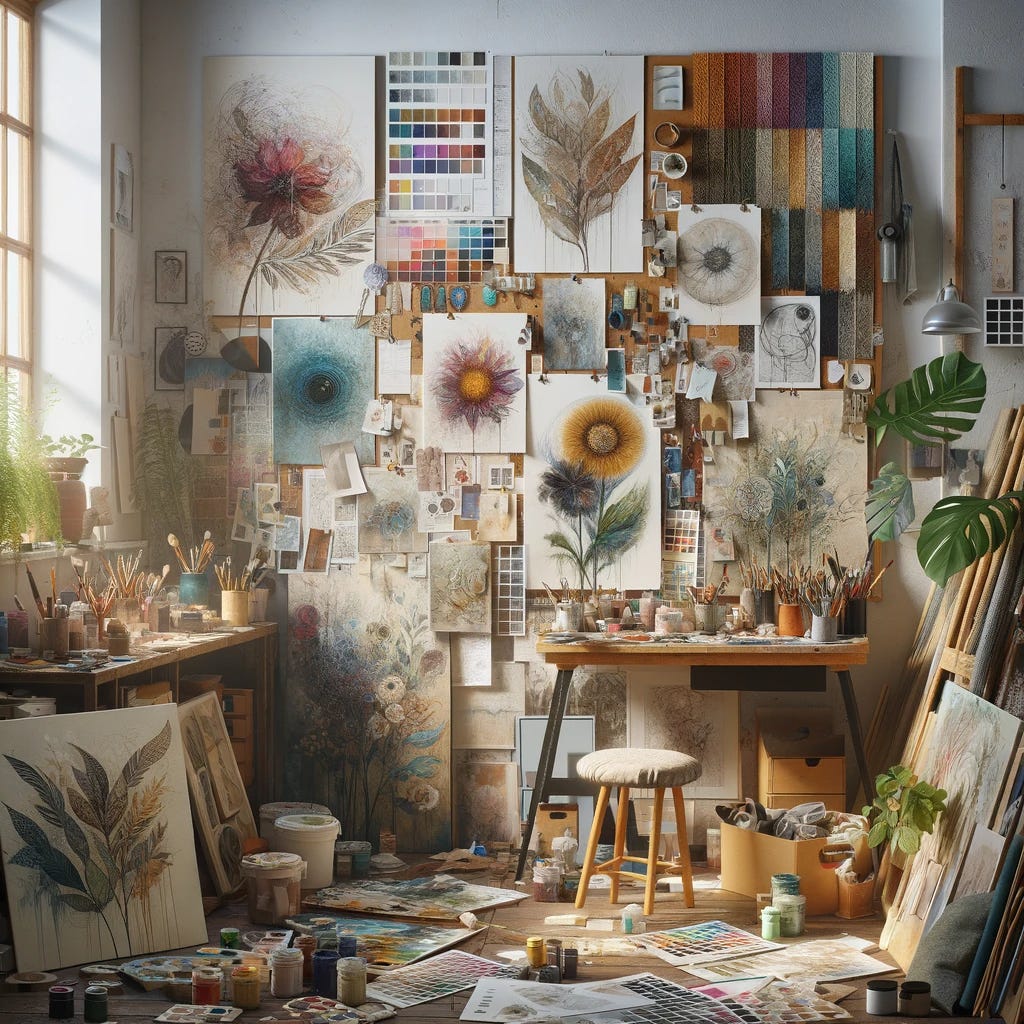Making my tiny and awkward art studio into a productive and inspiring environment is an ongoing saga.
I’d be complaining about it, except having a small, awkward space has forced me to be strategic. Even so, when I start pulling out the supplies and getting deep into the creative process, it can look like an arty grenade has exploded - and that takes a toll on my desire to get into it.
This January, I find myself doing an early Spring Cleaning in the studio, once again gathering all my best ideas for organizing, purging and making it a place I can’t wait to spend time in.
Here are my best tips:
Designate Zones for Different Activities: Divide your studio into specific areas for different activities like painting, sketching, or digital work. Yes, even if your space is small, this helps keep supplies organized and makes transitioning between different types of work more seamless.
Implement Vertical Storage Solutions: Maximize your space by using vertical storage like wall-mounted shelves, pegboards, or magnetic boards. This approach not only saves floor space but also keeps your tools visible and within easy reach. IKEA is your friend.
Introduce Mobile Furniture: Consider furniture on wheels, like trolleys or rolling carts, which can be easily moved around. This flexibility is especially useful in a multi-functional studio where rearranging space for different projects is necessary. I have a few rolling carts (entryway shoe racks) that fit under my work table.
Use Transparent Storage Containers: Store your supplies in clear bins or drawers. Being able to see what’s inside without opening each container saves time and keeps you from rummaging through everything to find what you need.
Create a ‘Waiting Room’ for Art: Have a designated area for works that are in a ‘waiting’ or ‘evaluation’ phase. I put my WIPs in the hallway. This separation helps me revisit and assess my work with fresh eyes after some time, providing a new perspective.
Always End with a Cleanup: Don’t make yourself start your creative time with cleaning up after your last session. It’s a slippery slope into procrastination. So when you’re done making art, spend a little time to clean, tidy and re-organize so the next time the muse comes to visit, you can let her right in.
Incorporate Natural Elements: Adding plants or having a small garden view can bring a calming effect to your studio. Natural elements can enhance creativity and provide a welcome break for your eyes, especially if you work long hours.
Establish a Digital Organization System: For digital artists or those who use digital tools, having a well-organized digital workspace is as important as a physical one. Use cloud storage, digital asset management tools, and regular file backups to keep your digital creations safe and accessible.
Moodboard for Inspiration: Create an inspiration corner or board where you can display anything that sparks your creativity. This can be an evolving space with items like photos, fabric samples, sketches, or even quotes that inspire you.
Regular ‘Creative Resets’: So it doesn’t get overwhelming, schedule a regular ‘creative reset’ where you re-evaluate your space. This could be a monthly or quarterly routine where you reflect on what’s working or not, making adjustments to keep your studio aligned with your evolving creative needs.
Creativity extends beyond the canvas and into problem-solving. Is your space a problem? Does the clutter paralyze you or give you freedom? It’s possible that having a messy, unorganized space helps you be more spontaneous!
I’m guilty of overthinking it (as usual) and can spend a whole weekend fussing with my space and organization. Confession: I sometimes use ‘tidying up’ as a way to avoid making art.
Now why would I want to avoid making art? Well, it’s the perfectionist’s problem of wanting all conditions to be just right before starting. If this sounds like you, my advice is to set a timer and commit to some boundaries. I’ll often use a 60-minute Spotify playlist as a timer. When the music stops, I’m done.
Refresh a little. Reset a little. And then get going. Because in five minutes, your neatly organized studio is bound to be a delightful mess again.


